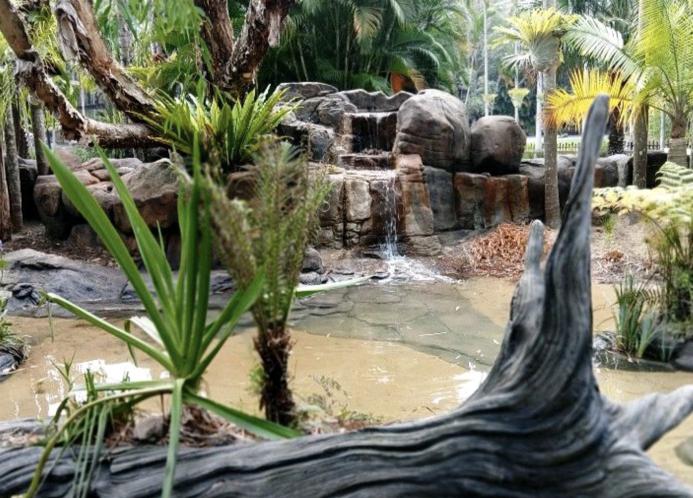Natural habitats in concrete?
By Cameron Chapman, an artist at Australia Zoo who creates habitats and sculptures from concrete and says it's a brilliant material for its flexibility.
Why create habitats and sculptures in concrete?
It’s a great question and there are so many reasons it’s a great choice. Concrete in the world of sculpture is often thought of as the poor cousin to the more traditional materials to work in, however for me, starting out in theming 30 years ago it was the only option.
Cost-effective, readily available, and for the most part just four ingredients and producing a piece that can withstand great punishment from people and the elements, I have chosen a technique that’s been utilized in museums, public spaces, and botanic gardens for more than a century with very little change except for better chemical additives and assorted high-tech finishes available.
Artificial rocks, trees, and even the dinosaurs I make all use the same structure starting with mild steel hollow section armatures for supporting a finer matrix of thin steel bar work to form the desired shape with chicken mesh wrapped over this to give the concrete a surface to grip. A ‘tack’ coat of sand and cement, a mortar, polypropylene microfibres, and a liquid mortar plasticizer to help the workability of the mix, increase strength, and reduce the water requirement. The final carving coat is the same mix, maybe with an increased cement ratio and excluding microfibre.
The final concrete coat is extremely flexible in the way it is worked: carve it, stamp it, or use texture rollers - it’s a brilliant material. There are numerous advantages of manufacturing artificial rocks in this way, mainly we don’t need to design our exhibits around real rocks, it weighs much less and the hollow form of an artificial outcrop of rocks can disguise a great many other essential facilities, such as pump rooms, off-display animal dens and even form sheltered areas for public interpretation. As with other industries, there are more environmentally safe products becoming available to use in the concrete and coatings applied to the finished surfaces.
All of the habitats that we create will ultimately have glass fibre reinforced concrete (GFRC) incorporated into the final enclosure. Disguising essential structures is its primary use. Block walls, sunshade supporting structures, and even functional surface drainage can be disguised as dry creek beds.
The final enclosures appear quite natural and form an appealing environment for both the public to view and provides calm surrounding for the inhabitants. Once the rockwork has been painted it is easy to maintain and just as easy to repair, do paint touch ups or completely repaint – and it lasts.

